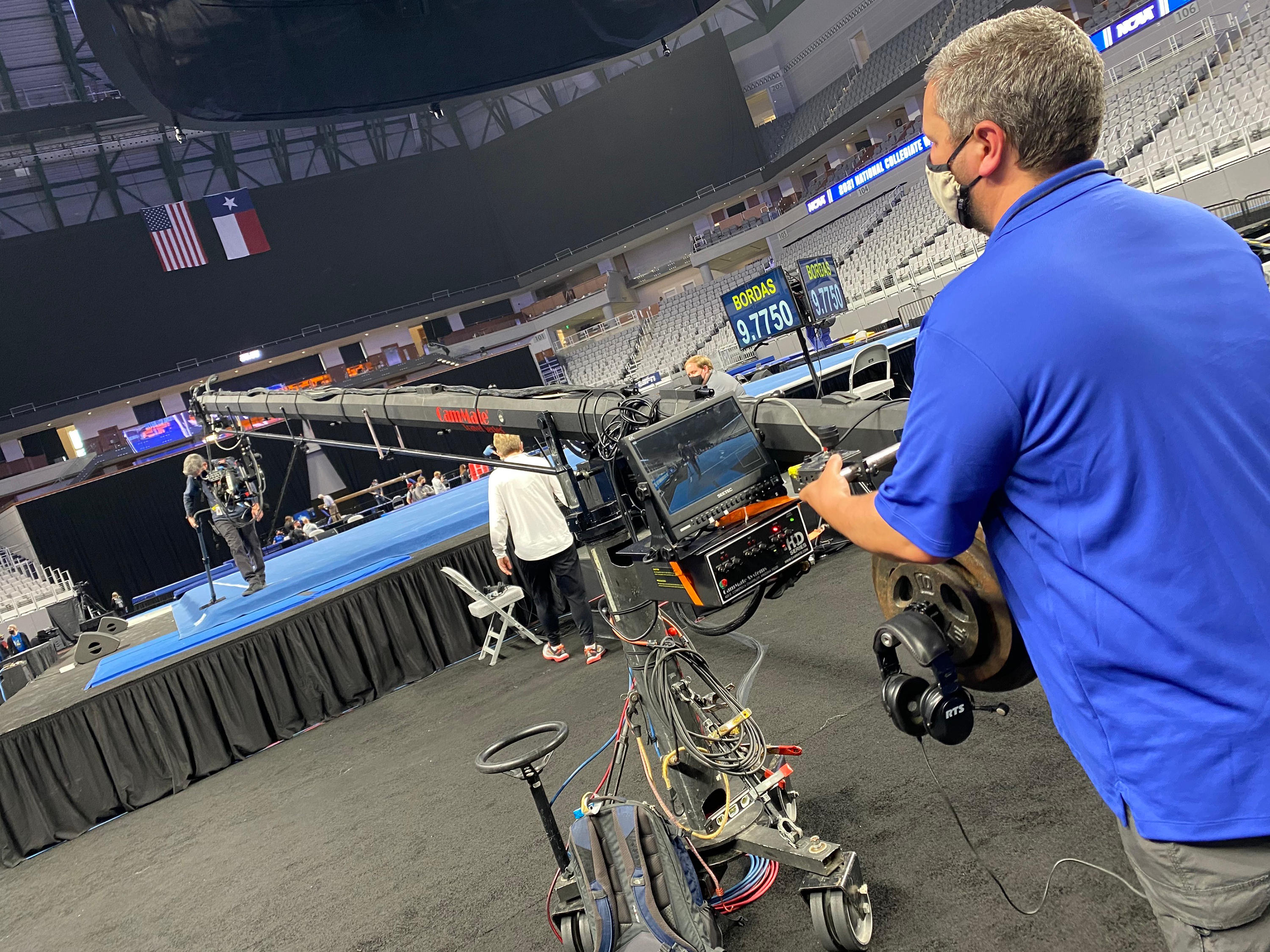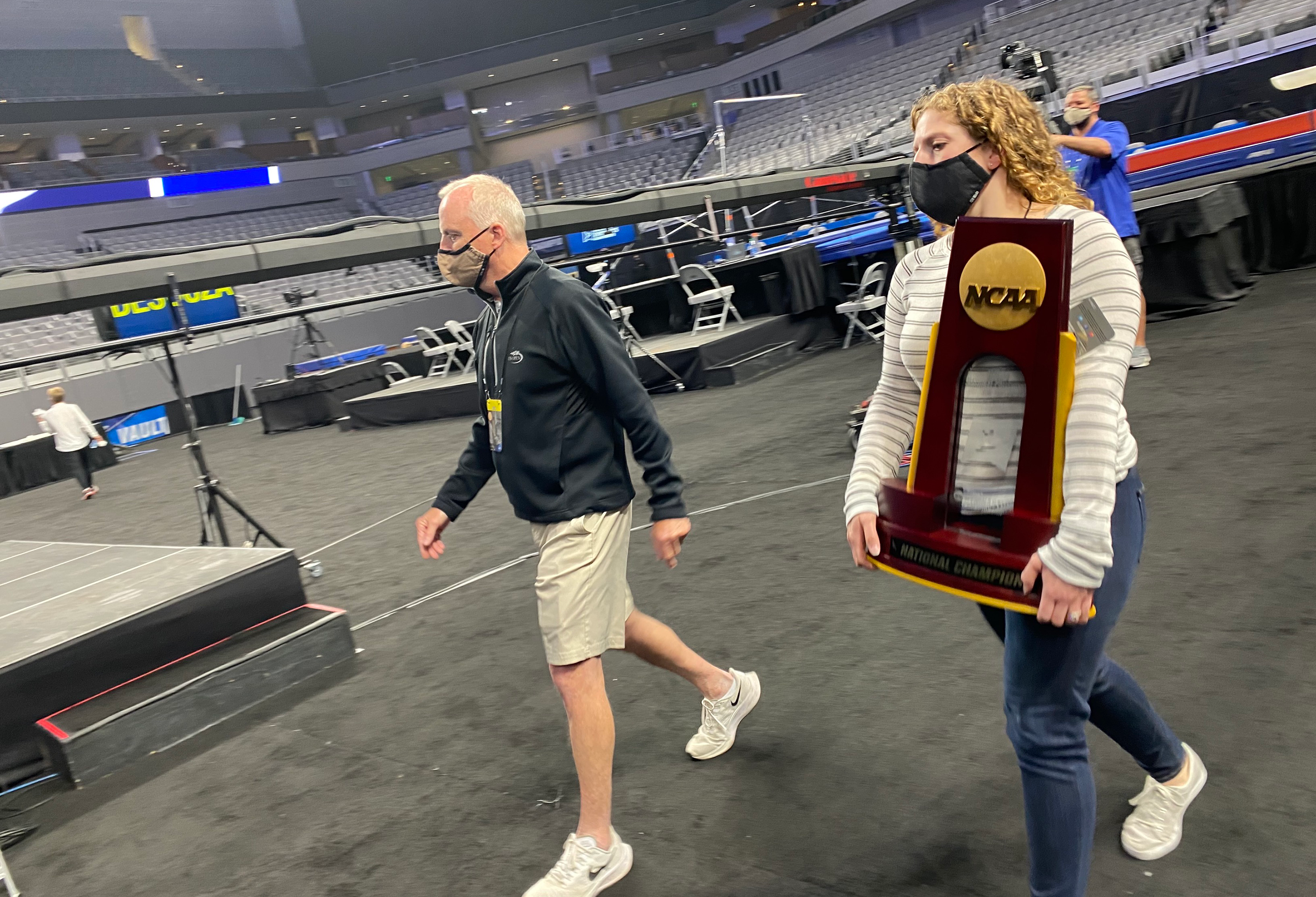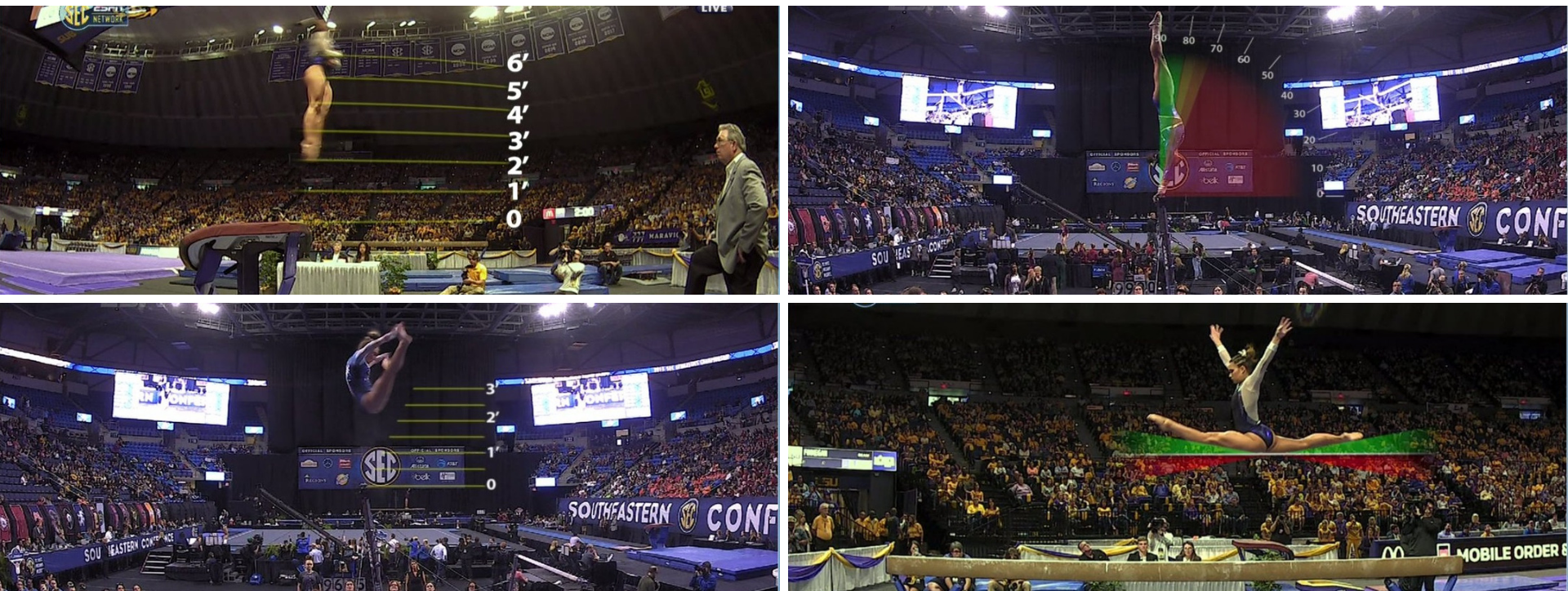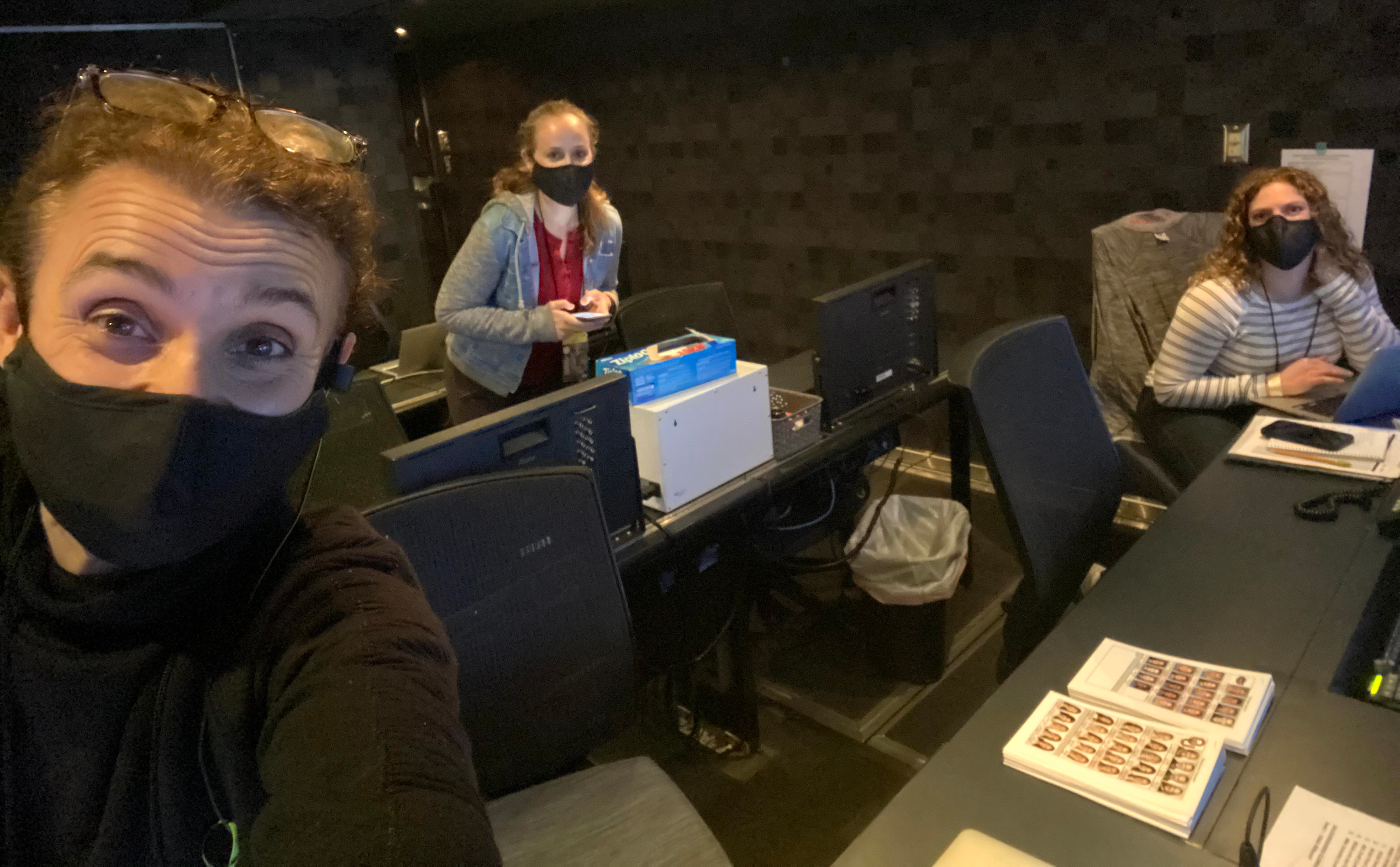NCAA Women’s Gymnastics Championships: ESPN Deploys On-Screen Data Markers, Extra Robos to Deliver Deeper Coverage
Event will make first-ever live appearance on broadcast TV when Championship Final airs on ABC on Saturday afternoon
Story Highlights
It’s a big weekend in the gymnastics world as the NCAA Women’s Gymnastics Championships makes its first ever live appearance on broadcast television.
An ESPN crew of more than 50 people is on-site at Dickies Arena in Fort Worth, TX to deliver live coverage of the event which begins Friday with Semifinal I at 1 p.m. ET and Semifinal II at 6 p.m. ET (ESPN2, ESPN3, ESPN App). However, it’s the Championship Final – which will be live on Saturday at 3:30 p.m. ET on ABC – that has the teams visiting the North Texas region buzzing.

At the NCAA Women’s Gymnastics Championships, a jib is one of the tools being used to deliver access to the viewers at a time where social-distancing guidelines make it tough to get up close to the athletes for the ESPN production crew. (Photo Courtesy Maria Soares, ESPN)
“It’s so exciting,” says senior coordinating producer Maria Soares, a 29-year veteran of ESPN who is overseeing her first NCAA Women’s Gymnastics Championship. “And not only is the production team really excited about it, but every coach and gymnast, everyone that we talked to, it really is such a highlight for them. I think for them, it just represents the level of where the sport is, and really just how much the sport has grown. It’s probably the second thing, if not the first thing, that everyone mentions as we walk around Fort Worth. So, yeah, it’s a really big deal for everyone.”
While COVID protocols are still very much in place, the ESPN operations team is overcoming various restrictions and access limitations with acquisition gear positioned to get the viewer closer to the action. That means more strategically placed robotic cameras and POVs, as well as a jib that will do its best to reposition itself throughout the competition.
There are approximately 17 cameras in the building with POVs locked off on each individual apparatus, as well as six cameras run by human operators, seven Marshall POVs, and the jib. Those unmanned units are mostly placed in backstage areas to capture athletes, surrounding events, and, ultimately, the trophy presentation on Saturday.

Director Dan McVan (left) and producer Cara Lagana rehearse the trophy presentation earlier this week. The Championship Final will air on ABC beginning at 3:30 p.m. ET. (Photo Courtesy Maria Soares, ESPN)
“By nature of the sport itself,” Soares says, “we like to tell the story by being up close to the gymnasts that are on the floor. Given a lot of the protocols that we’re working with this year, we had to just find new ways of telling those stories. We just had to be a little bit creative in how we get as close to the story and the gymnasts.”
The producer-director team of Cara Lagana and Dan McVan will anchor the front bench in the production truck. This is Lagana’s first NCAA Women’s Gymnastics Championship in the producer’s chair after spending the last two regular seasons overseeing the network’s coverage of the sport. She was slated to produce last year’s championship before it was canceled by the NCAA following the COVID-19 outbreak. Soares, meanwhile, gave McVan kudos for playing a key role in shaping of the network’s coverage in face of the on-site restrictions.
“[Dan] has so much to do with how we’re going to visually depict the sport,” Soares says. “He really has had to reimagine it with where we’re going to have the different cameras.”
The production team will also been implementing some fresh graphical elements to help tell the story of the tremendous athleticism of the student athletes. Included are height and distance markers on the vault, protractors for body angle and a height grid on the bars, and a “split-o-meter” on the balance beam. These aren’t new elements for ESPN’s college gymnastics coverage as it was utilized in the 2019 SEC season, but it’s the first time the network has been able to utilize them this year due to the nature in which events needed to be produced. Naturally, Soares is excited to have them back.

Added graphical elements use unique measurements to display the athleticism of the competitors. (Photo Courtesy of ESPN PR; example from 2019)
“It’s cool for us to get to bring them back,” she says, “We’ve got our own truck on site and we’re back with our ESPN production folks on site. We’re really able to and enhance the sport the way we love to do it.”
Anyone who has worked on a gymnastics event will tell you how challenging it can be to tell a live linear story for the audience at home. With so many things happening simultaneously, building to a dramatic championship moment doesn’t come as easy as working to the end of a timed game might. Additionally, there’s a higher likelihood for casual viewers with the Championship Final on broadcast on Saturday. These are all factors that the front bench is prioritizing in their storytelling heading into the weekend.
“When you have four apparatuses going at the same time, your brain functions differently. Your producer functionality is different. I think that’s what’s unique,” says Soares, who has experience working Olympics and Pan-Am Games in her years working at ESPN International. “Basically, [the challenge is] how you manage the flow and how you prioritize between all these different things going on.

Senior coordinating producer Maria Soares (left) in the primary of two mobile production units on site with assistant director Robin Segreti (center) and producer Cara Lagana (right). (Photo Courtesy Maria Soares, ESPN)
“Any sporting event is challenging,” she continues, “It is definitely different to go from something where you have one thing going on to having four things going on at the same exact time and you have scores coming in. We really spend a lot of time mapping out, once we have all the lineups, who we really want to prioritize and how we’re going to bounce around the floor. So that’s a really skill set because there’s a plan on paper and then there’s a plan that actually happens once you actually go on air. The ability to adjust quickly and keep your flow and just keep your perspective on not only what’s going on, but what the flow of the show is, is a really special skillset.”
In addition to the linear coverage, ESPN is offering comprehensive streaming options, including individual apparatus streams, plus a quad-box viewing option that displays all four apparatus in realtime. There’s also a Spanish-language option. Available on ESPN3 and the ESPN App, streamers can access six streams per session for 18 streams total.
Those robo cams and additional manned cameras, POVs and the jib, play a major role in making the individual apparatus streams and the quad box capabilities possible.
